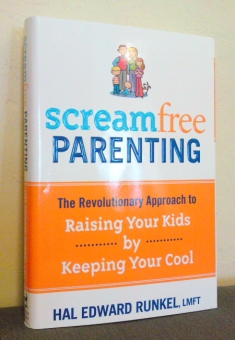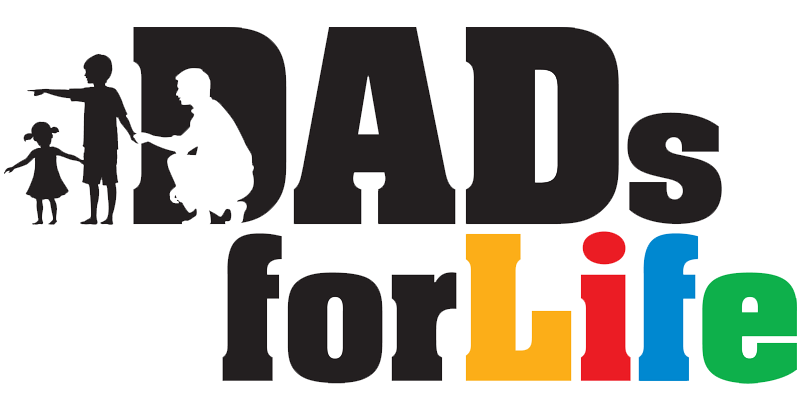Who’s Screaming?
Screamfree™ is defined as learning to relate with others in a calm, cool and connected way, taking hold of your own emotional responses no matter how anyone else chooses to behave; learning to focus on yourself and take care of yourself for the world’s benefit.
Screamfree Parenting may indeed be a revolutionary book because it gives a cool spin on parenting.
Rather than providing yet another list of “to-dos” for the well-being of the children, Hal Edward Runkel, licensed marriage and family therapist, asks parents to first focus on themselves.
Hal explains that parents have been bombarded with the call to constantly put the children before themselves. Noble as it may sound, it is NOT the path to effective parenting.
He says: “This call for total self sacrifice is actually hurting, leaving parents feeling more overwhelmed, more frustrated and less capable.”
Rather, Hal urges dads to refrain from fretting about how the children behave and perform, and begin to recognise that their number-one leadership role in the family is that of a calming authority.
Most Asian dads would be able to identify with the call for a calmer home with less screaming. But, isn’t it the children and wife that need to stop screaming?
“Surely, not I?” they say.
However, Hal explains that screaming comes in many forms. A dad who “screams” is communicating, in words or otherwise, to his child that he is upset by the child’s behaviour and needs the child to do something to calm him down.
The dad is giving the message: “I need you to comply or else I’m going to lose it. And when I lose it, I’m going to need you to comply so that I can calm back down. All my responses are up to you.”
For example, a dad may nag and run circles around his child until the homework gets done. Another dad may withdraw emotionally from his daughter, telling her to stop crying immediately because he just does not want to take her whining. Both dads are screaming; they are not relating with their children in a calm, cool and connected way.
That’s an interesting angle that most dads probably haven’t considered. Basically the book asks dads to think about what growing-up they need to do, despite the fact that they are already fathers themselves.
Essentially, it’s the dad who is able to soothe himself and remain emotionally stable in the face of an anxious child’s actions that can provide a calming effect on the entire family. We certainly would not want to add to the anxiety.
And that’s what makes this book so relevant in a performance-oriented society such as Singapore. Many of us have become so accustomed to pleasing parents, teachers, bosses, and organisations, that we haven’t the time to ask what’s the anxiety underlying our lives when we become adults ourselves.
At the same time, our internalised anxieties are probably the issue that makes it so challenging for the average Asian dad to apply the principles purported in the book. We’ve been brought up community-oriented and strongly ingrained with concepts of putting family and society above self – all good values in their own right, but often to the extent that the idea of self-care and focusing on one’s own needs feels just too self-centred.
But it’s not just an Asian “thing”. The author himself admits that the concept of self-care is also difficult for the average American reader to grasp. Nevertheless, it’s possible, and paves the way for “relationships full of joy, cooperation, harmony, and most of all mutual respect.”
What’s in Screamfree Parenting?
The book is made up of four parts to explain what a “cool” parent looks like. First, parents are shown how to be in control of their emotions so that they can be in charge.
Next, parents learn that they can keep their cool by creating space for the kids to grow and for them to feel secure in. Finally, and probably most importantly, the parent who really is cool, is one who exercises self-care and pursues interests that allow for personal growth. (See Contents)
Hal uses terms such as “space”, “place” and “self-care” throughout the book to help parents form a very clear picture of the structure a family needs for everyone to become increasingly self-directed and not dependent on each other for emotional stability.
Each chapter comes with its own set of Reflection Questions and great quotes such as: “Without space to make their own mistakes, our kids live only borrowed lives.”
Essentially, Hal is able to explain complex psychological and relational concepts in simple terms. That, together with the whimsical quotes, often drawn from popular culture, makes the entire book easy to understand and identify with.
Chapter Highlights
Chapter 1: ‘Parenting is Not About Kids, It’s About Parents’ sets the tone by telling Mum and Dad that they are “responsible to their children” but not “responsible for their children”. The Catch-22 of the “responsible for” model is that it positions parents to think they have to programme their children correctly.
In such a model, children have to conform to the system – surrender their individuality – and become “the child we don’t have to worry about,” or they rebel against the system, failing to “get with the programme.”
As such, parents must recognise that they have a profound influence on their children’s lives, but without taking total responsibility for those lives. Otherwise they are constantly focused on controlling the child’s behaviour.
A parent can improve the way he relates to his child only if he begins to focus on what he is responsible for: his own emotions and reactions. And the rest of the book expounds on that.
Chapter 5: ‘Resistance is Futile; Practice Judo Parenting’ is particularly interesting. Here, Hal uses Judo or “The Way of Gentleness” as a metaphor or image of how to manage conflict. Rather than resisting when challenged, parents are urged to remain connected with their children.
He explains that in a conflict, a Judo participant is engaged with the opponent, choosing to remain connected, but refusing to attack or accept the invitation to fight. Instead, the Judo participant accepts the other’s momentum as belonging to the other, and something to be respected rather than resisted.
Thereafter, Hal quotes several phrases children commonly use to test their parents: “I’m bored” “Are we there yet?” and “I hate you!” And he uses each scenario to illustrate how parents can choose not to engage in a battle when children express themselves that way.
According to Hal, parents are to go with the momentum and come alongside the child are he faces his own dilemma. For example, say: “Wow, you are bored? That stinks, I hate it when I’m bored. What are you going to do about it?”
“Our goal is not to stifle our children’s expression of will, desire, or emotion. Our goal is to steer those expressions along the most productive paths,” says Hal.
Perhaps then, the path of least resistance will be to pick up a copy of at a nearby bookshop, library or online bookstore.
Contents
Part One: Becoming the “Cool” Parent Your Kids Really Need
1. Parenting is not about kids, it’s about parents
2. Growing up is hard to do, especially for grown-ups
3. If you’re not under control, then you cannot be in charge
Part Two: Keeping Your Cool Means Creating Space
4. Begin with the end in mind, but let go of the final results
5. Kids need their room
6. Resistance is futile; practice Judo parenting
7. You are not a prophet (and neither is grandma)
Part Three: Keeping Your Cool Means Creating a Place
8. Parents set the table by setting the tone (and vice versa)
9. Let the consequences do the screaming
10. Empty threats are really broken promises
Part Four: Putting Yourself into Practice
11. Put on your own oxygen mask first
12. Revolutionary relationships
About the Author: The Dads for Life Resource Team comprises local content writers and experts, including psychologists, counsellors, educators and social service professionals, dedicated to developing useful resources for dads.
First published on 14-06-2011.
